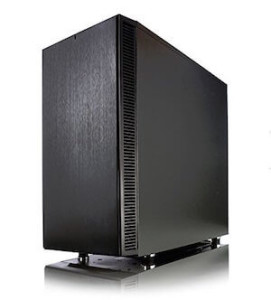 CAD is no longer a software category. It’s no longer committed to mini computers the size of a car. CAD is now an entire discipline. It encompasses masses of hobbyists, engineers, construction professionals, architects and builders of all sorts. This discipline in turn requires a separate category of computers known as Workstations. Welcome to this article discussing how to pick a workstation and reviews of the best CAD workstation products.
CAD is no longer a software category. It’s no longer committed to mini computers the size of a car. CAD is now an entire discipline. It encompasses masses of hobbyists, engineers, construction professionals, architects and builders of all sorts. This discipline in turn requires a separate category of computers known as Workstations. Welcome to this article discussing how to pick a workstation and reviews of the best CAD workstation products.
The important thing to take away from this article is that different softwares require different workstation specifications to perform at their best hence the intention of this series lies in equipping CAD users with enough knowledge to configure a worthy CAD workstation for themselves.
[table id=31 /]
How to Choose the Best CAD Workstation
Processors
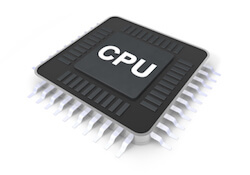 I’m going to talk about Intel processors as a personal criteria. The thing about Intel processors is that their pipelines are meant for longer streams of data, those streams that are most common to visual computation. All my reviews favor Intel architecture specifically because the processors are structured in a way which in turns deals best with all kinds of CAD functionality.
I’m going to talk about Intel processors as a personal criteria. The thing about Intel processors is that their pipelines are meant for longer streams of data, those streams that are most common to visual computation. All my reviews favor Intel architecture specifically because the processors are structured in a way which in turns deals best with all kinds of CAD functionality.
When it comes to building a CAD workstation, CPU is generally considered to be the king. The majority of CAD operations you will find these days are CPU based so the better the CPU clock speed and the high the number of cores the better. This will help reducing the time it takes your software to rebuild and render files. For example, 2D drawing in Solidworks is where it will use multiple cores and assign a core to each drawing view in your active drawing sheet. Hence a quad core CPU with Hyper-Threading will outperform a dual core CPU.
The speed of a processor is frequently listed as its “clock speed” and is measured in GHz. The core count tells you how many cores per CPU are allocated to it. For instance, an i7-4790k GHZ quad core processor has 4 cores, each running at 4.0GHz. Multicore threading technology is a must so more threads can be allocated to the rendering process. The cache sizes need to be in the range of 8MBs if you’re a serious CAD designer. This would enable you to use the largest datasets, no matter how big the header file, the number of caches and their respective sizes will do wonders when the render is underway.
What to get? More Cores or more speed?
The answer to this question depends on what kind of work will you be doing, rendering or CAD design? Rendering is a core churning operation so the more cores you have the faster render times you are expected to get. I have read a lot of posts alluding to the fact that most people believe rendering is performed by GPU when it is primarily a CPU based process. Some modern rendering programs take advantage of the GPU at times but that does hold not true for majority of the programs. This is normally done by utilizing the GPU’s cores to aid the CPU in rendering processes. When we say rendering is a multi-threaded operation that means it will utilize more than one processor at a time. So the more cores you have the faster the render will be hence a quad core processor is able to perform much better in rendering compared to a dual core processor. You can also opt for multiple CPUs depending on the motherboard.
If we talk about modeling with 3D CAD software (such as SolidWorks), it is primarily a single threaded operation meaning that it will use only one core at a time. So if you want to build the best CAD workstations for 3D modelling then the higher the clock speed the faster your designing process will be. It is not surprising to see that a 3.2 GHZ dual core processor faster at modelling than a 2.8 GHZ Quad core processor.
Graphics Card for CAD Workstations
The video card is responsible for displaying your 3D models on the screen and after the processor it is considered the second most important piece of hardware. It has nothing to do with rebuild times, processing, or anything except to offer a refresh rate of the 3D graphics on screen in frames per second (FPS). The graphics card is there for visual display of the model when you roll, pan or zoom. The difference between a high end GPU compared to a low end one is seen when you rotate a model that starts to become choppy since the GPU is not fast enough to compute the hidden and contour lines when the view changes. You won’t feel this difference when you move from a mid-range to a high end card since those cards provide a frame rate of 60 FPS but it is actually your monitor this time that is causing the bottleneck.
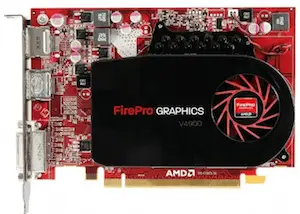
Talking about 3D CAD applications you will need a professional, OpenGL graphics card and not a DirectX one. This is because an OpenGL card will calculate higher detail models at relatively lower frame rates which is opposite to what the DirectX does. The same philosophy applies to graphics card when it comes to CAD, when choosing a graphics card you want to keep in mind the type of work you will be doing. If your work requires you to handle very large assemblies with numerous parts then go for a GPU with more memory otherwise your GPU performance will suffer from lag and stutter. Check out reviews of the best graphics cards here.
Primary Memory
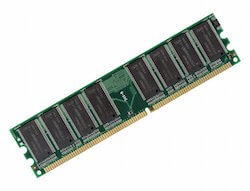 RAM amounts need to be 8 GB at the very least if you’re a serious CAD enthusiast or if this is your profession. If your bread and butter comes from CAD, 8 GB’s is the least you can settle with. Autodesk’s AutoCAD requires the most (16 GB for best performance, 8GB for regular) but since that’s an extreme we take 8 GB to be the working average. Any DDR version should do, DDR3 is pretty commonplace within the “premium-grade equipment” circle, and a few entries even have DDR4. Make sure to check out the detailed guide to choosing the best RAM for CAD.
RAM amounts need to be 8 GB at the very least if you’re a serious CAD enthusiast or if this is your profession. If your bread and butter comes from CAD, 8 GB’s is the least you can settle with. Autodesk’s AutoCAD requires the most (16 GB for best performance, 8GB for regular) but since that’s an extreme we take 8 GB to be the working average. Any DDR version should do, DDR3 is pretty commonplace within the “premium-grade equipment” circle, and a few entries even have DDR4. Make sure to check out the detailed guide to choosing the best RAM for CAD.
Actually if we talk about Solidworks, assemblies behave the same way as parts do with the CPU but there are two things to be aware of. Your PC should have enough RAM to load all of the parts into memory otherwise it will start consuming virtual memory of your computer and you don’t want that. The other thing which is only now beginning to appear in posts is the effect of having a SSD compared to HDD. Since CAD performance is tangled in the ability of HDD/SSD providing data at a faster rate for the RAM to load, I’m going to cover Storage suggestion here as well.
The widely accepted idea is to have both SSD and HDD since SSDs are extremely fast at loading and transferring data to RAM compared to HDDs. For this very reason people dedicate their SSDs to windows, softwares and projects they are currently working on whereas things which don’t fall in daily routine are kept in HDDs. All I ask of you is to try using SSD one time, trust me you will never go back to using HDDs. Check out this article on reviews of the best SSD for CAD.
Others
Optical drives are not really a point of discussion because they don’t really contribute to CAD development by themselves, instead are means of storage of data which can be CAD related. Since all the CPUs and GPUs are pretty high-end and power is a necessary resource, an 850W power supply is a good option. Almost all the systems review will have this. Anything less is risky and anything greater is a waste.
Best CAD Workstation Reviews
CPU Solutions
- Haswell Intel i7 4790K 4.0ghz Quad Core
- 32 GB RAM, 3TB HDD and 1000GB SSD
- FirePro V7900 w/2GB, Windows 7 Pro
[easyazon_link keywords=”CPU Solutions” locale=”US” tag=”cad1208-20″]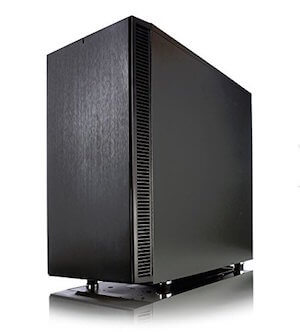 [/easyazon_link]This beast of raw power is hardware in its prime, an industrial grade solution to all CAD commitments. At ~50 pounds (22 kilos) this behemoth box holds a 4790K i7 Quad core processor clocking 4Ghz. With 32GB of DDR3 SDRAM and 1TB on SSD, everything from saving files to CAD development quick and responsive. Following this, a FirePro 2GB GPU handsomely accompanies the rest of the assortments with a whooping 2GB GDDR5 of visual throughput and a max resolution output of 2560×1600 @ 60Hz. With four different HDMI ports any combination of flat screens or LEDs would lush your workspace.
[/easyazon_link]This beast of raw power is hardware in its prime, an industrial grade solution to all CAD commitments. At ~50 pounds (22 kilos) this behemoth box holds a 4790K i7 Quad core processor clocking 4Ghz. With 32GB of DDR3 SDRAM and 1TB on SSD, everything from saving files to CAD development quick and responsive. Following this, a FirePro 2GB GPU handsomely accompanies the rest of the assortments with a whooping 2GB GDDR5 of visual throughput and a max resolution output of 2560×1600 @ 60Hz. With four different HDMI ports any combination of flat screens or LEDs would lush your workspace.
Empowering this mammoth of technology is an 850W power supply and a water cooled mid tower CPU casing. 10 USB ports give you extra room for peripheral connectivity and two audio out ports means your friends can join in to listen to whatever your listening. 8 of the ports are USB 2.0 with a variation available in the USB 3.0 ports, depending on the board’s make. One make supports 6 whereas the packaged board supports 2. The SATA ports are 6 in total with a 6.0 GBps transfer rate.
The Haswell based system is a CPU Solutions glamour/model product highlighting the high-end box with a pumped up array of assortments squeezing out the kind of juice any Hollywood professional or skyscraper construction company needs for development and production. It’s the basket you want to put all your eggs in, because even the most high-end software, requires 16 GB of RAM. This system has double. The processor requirements start and end well before the included processor is capable of. The tower is a linear cuboid with sharp edges and vertical side vents. The sleek look makes it look like a tower-shaped UFO with a smooth front. And yes the smooth front means no optical drive comes included. With the buttons on the top edge, the buttons, audio/USB ports are easily reachable and that’s the extent of frontal accessibility.
[easyazon_link keywords=”CPU Solutions” locale=”US” tag=”cad1208-20″]
[/easyazon_link]
| Pros | Cons |
| Multicore processor | Only 8 parallel threads |
| 32 GB RAM, 1TB SSD | Expensive |
| Water cooled casing, sleek design | Limited frontal access |
| Extra USB, display ports, PCI Express slots | AMD GPU on Intel architecture |
| 6 SATA ports @ 6GBps | No optical drive |
CybertronPC Blueprint CAD1194E Desktop
- 4th Gen. Intel Core i7-4770K 3.5GHz
- 16GB DDR3| 2TB HDD
- NVIDIA Quadro K2000 2GB Video Card
[easyazon_link keywords=”cybertronPC blueprint desktop” locale=”US” tag=”cad1208-20″]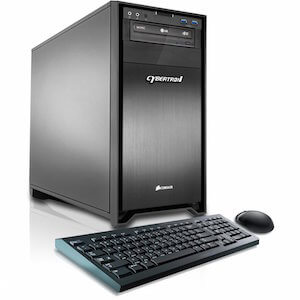 [/easyazon_link]Another solid middle weight entry is the CybertronPC Blueprint CAD1194E Desktop for a middle-weight price tag of USD 1,499.99. At almost 20 lbs in weight the Intel Quad-core i7 clocks 3.5 GHz with a max of 3.9 GHz in turbo. A 64-bit architecture for 8 cores and 16 parallel threads promises a visible boost in multi-core CAD simulation software. SolidWorks due to its resilience is an unofficial benchmark. If SolidWorks runs well, the machine’s good enough, hence run a SolidWorks simulation/render and you’ll see the difference.
[/easyazon_link]Another solid middle weight entry is the CybertronPC Blueprint CAD1194E Desktop for a middle-weight price tag of USD 1,499.99. At almost 20 lbs in weight the Intel Quad-core i7 clocks 3.5 GHz with a max of 3.9 GHz in turbo. A 64-bit architecture for 8 cores and 16 parallel threads promises a visible boost in multi-core CAD simulation software. SolidWorks due to its resilience is an unofficial benchmark. If SolidWorks runs well, the machine’s good enough, hence run a SolidWorks simulation/render and you’ll see the difference.
The AVX (Advanced Vector Extensions) and VT-d (Virtualization technology for directed I/O) are Intel products amongst others which maximize performance for rendering.
And of course, the GPU. The 4 core CPU goes well hand in hand with the 2GB GDDR5 GPU. Coupling off the due gives a maximum resolution of 3840 x 2160 at 60Hz, accelerating all rendering tasks by taking on greater datasets with its 64.0 GB/s memory bandwidth. With this kind of power, the question is what are you going to design?
[easyazon_link keywords=”cybertronPC blueprint desktop” locale=”US” tag=”cad1208-20″]
[/easyazon_link]
| Pros | Cons |
| Multi core, more threads | All benchmarks are average, except processor |
| Virtualization technology | Ordinary design/bleek look |
| Premium CPU | Gaming GPU |
Titan Computers X150 Workstation
- Intel Xeon E3-1220V3 Haswell
- 8GB of RAM, Nvidia Quadro K620 2GB
- 1TB 7200 RPM HDD, Windows 8.1 Pro
[easyazon_link keywords=”Titan Computers X150 Workstation” locale=”US” tag=”cad1208-20″]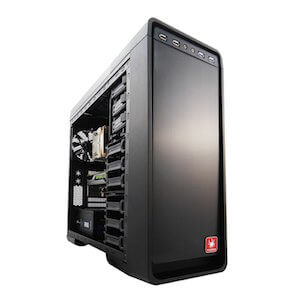 [/easyazon_link]This product is also high-end, just a notch below the Cybertron. Packing in 3.1Ghz (3.5 in Turbo) the quad-core chip is a Haswell V3. It’s of Xeon make and use the ASRock Z97 overclooking Formula. With 8 GB of DDR3 RAM and 1TB of storage, the tower is meant to perform for those looking for performance when they have some free time. The processor is well known to be the least expensive of the quad-core line ever but doesn’t fail to deliver.
[/easyazon_link]This product is also high-end, just a notch below the Cybertron. Packing in 3.1Ghz (3.5 in Turbo) the quad-core chip is a Haswell V3. It’s of Xeon make and use the ASRock Z97 overclooking Formula. With 8 GB of DDR3 RAM and 1TB of storage, the tower is meant to perform for those looking for performance when they have some free time. The processor is well known to be the least expensive of the quad-core line ever but doesn’t fail to deliver.
The amount of RAM covers the requirements easily for all kinds of software, even those for Autodesk AutoCAD and its platinum suite. I mention this software here because the amount of RAM and processor throughput required by this software is the maximum anywhere in the software arena. The first system reviewed surpasses these requirements easily and this one is just spot-on.
[easyazon_link keywords=”Titan Computers X150 Workstation” locale=”US” tag=”cad1208-20″]
[/easyazon_link]
| Pros | Cons |
| Relatively cheaper | Third position in terms of performance |
| Quad core, Xeon | Will need upgrades within a year |
| Windows 8.1 | RAM is 8GB, half way on our benchmark |
Final Notes
At the end, I’d like to leave you off with a last note. A personal opinion, because if I had the extra cash, I’d definitely go for the first listing, hands down. Per core it’s 4.0GHz, but the other systems have fewer cores hence fewer threads. The GPU is a better suited to the Intel architecture. 3TB of HDD is good. Minor pluses considering the overall price comparison are always a bargain. Choosing the best CAD workstation can save you time in designing and headaches!

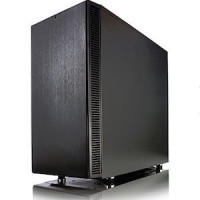

Comments
9 responses to “Best CAD Workstation Reviews of 2018”
[…] or Random Access Memory is the primary memory unit in a computer workstation, whether desktop, laptop or mobile device. It’s faster than your 2TB hard drive because it […]
[…] a last note, the software’s design can also be a good guide to what your CAD workstation should be like, for instance a multi-threaded program will benefit from multiple cores, and there […]
Build your own desktop. It’ll be cheaper and more powerful than anything prebuilt. And its honestly super easy. Message me if you want parts recommendations. I’m an engineer who uses SolidWorks and AutoCAD and I regularly play video games on my PC.
https://www.youtube.com/watch?v=Sr3MgKkS314
Could you give me the specs of your computer? I’m looking to build a good computer for solidworks. My budget is around 300ish, but if I could do it for less I would love that. I just want something to get by untill I can buy top of the line components.
My PC is out of that price range… although it’s relatively budget for the performance. I’m using an i5-3570k CPU, a GTX 980ti GPU, and 8 GB of DDR3 ram.
For $300, I would just suggest you forgo the GPU unless you want to be gaming. I use a an i5 laptop cpu from 2010 for SolidWorks sometimes.
So, the point I guess is that you don’t really need a GPU for SolidWorks. I would recommend getting a used i5-2500 or something. That would be able to run it fine.
If you REALLY want to do some light gaming on it, an AMD FX-6300 and a GTX 660ti would fit the bill for 1080p. (A newer i3 would be good too, if just slightly more expensive, and you would be able to directly upgrade to an i5 or i7 if you wanted to.) If you buy it all used, you should be able to be within $300. (Unless you don’t have a copy of windows or need to buy a monitor as well. Then I would say you should probably be looking at spending around $450 or something along those lines. Buy used as much as possible.)
Good Luck.
lol 300 dollars? you need at least 1000 dollars
The weekest CAD-capable graphics card is around 400+ USD.
A proper CPU (like a 6600K) is around 200 USD. A Decent C-chipset MoBo is around 200 USD as well. Get 16 gigs of RAM, 250 gigs of SSD and 1 TB of HDD… You are already looking at 1000 USD + builds easily.
A budget workstation is hard to accomplish. While it’s great this site recommends very low end, outdated GPU cards there are many others out there that are affordable, just outdated. For my workstation I just put together I spent over $5k. That’s not even the best but here are my specs. It should have anything I throw at it…I hope! Intel 17-6850k Broadwell CPU, Nvidia Quadro P5000 GPU, Asus X99 Deluxe II, Corsair Dominator Platinum DDR4 3333Mhz 64GB (4 Sticks), Samsung 960 Pro SSD 512GB, Western Digital Black 5TB HDD, Corsair HX1000i Power Supply, ThermalTake Core P5 open water cooling case. 480mm Alphacool Radiator, 4 Corsair Mag Lev 120mm fans, ThermalTake 360mm Reservoir Tank and pump combo, and Bitspower fittings for water cooling loops. Don’t forget water blocks for your GPU and CPU…I’m using EWKB and Alphacool. To give you an idea in price the Quaro P5000 card is $2500, but they have a P6000 that is like $4500 alone!!! 2GB GPU’s will be fine for the beginner but will hang up quick under intensive models.
Pretty much the same thing i went for except i have AX1200 PSU (left from my gaming rig), HyperX Predator 64GB DDR4 and i currently don’t have case for it (searching for a nice big tower like Corsair 900D). Also had some problems with Windows 10 and PNY P5000 but solved it with couple of tweaks.
I agree with you that budget ws is hard to “assemble” (not just for CAD, for every type of work you need workstation). People usually got with top of the line GPU and CPU but then want to save some money on MBO and that (in most cases) is a problem for RAM support (friend of mine went with “el cheapo” MBO from ASRock on his z170 workstation just to find out that that MBO don’t support RAM he already bought”). And as i always say “cooling, cooling, cooling”